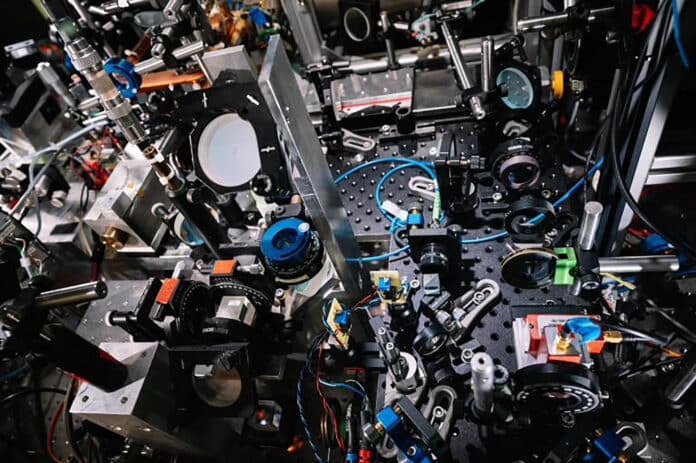In ultracold atomic clouds, two superfluids might exist simultaneously. Their cohabitation could not previously be observed experimentally. However, physicists at Heidelberg University have shown one such magnetic quantum fluid - fluid in two directions - in an atomic gas. Researchers led by Prof. Dr. Markus Oberthaler were able to create this phase in swarms of ultracold rubidium atoms as well as characterize it in great detail. The analysis of the physicists was published in the scientific periodical Nature Physics.
Fluids, as mankind knows them, do not hover voluntarily. Massive pumps plus turbines are required to transport water, yet honey pours slowly from a spoon. This is due to the fluid's inner friction, which eventually converts motional energy. This could appear significantly diverse in a quantum fluid, which would be strongly related to the process of Bose-Einstein condensation.
The research was conducted as a component of Heidelberg University's Collaborative Research Centre 1225, "Isolated Quantum Systems and Universality in Extreme Conditions" (ISOQUANT).
Notable Quantum Mechanical Phase of Atomic Gas
A Bose-Einstein Condensate (BEC) would be a peculiar quantum mechanical phase of an atomic gas at very low temperatures. In this condition, a cloud of single atoms functions as a single liquid. This quantum fluid can flow without resistance; it is superfluid. Prof. Oberthaler mentioned that the atomic Bose-Einstein condensates have been generated in recent decades from a variety of atoms, including sodium and rubidium, but also more recently from "exotic" elements such as erbium and dysprosium.
Following the TechXplorist report, the physicists mentioned that, although the majority of such atoms have internal degrees of freedom, they have a spin but also act like little magnets. It can, in theory, lead to the phenomena of Bose-Einstein condensation, but this has yet to be actually seen, as per Dr. Markus Oberthaler, a research associate at the Kirchhoff Institute for Physics. That includes an ultracold cloud of rubidium atoms, and the demonstration is currently achievable.
Evaporative cooling is usually utilized to equip a Bose-Einstein condensate. Such functions like blowing on a mug of coffee to cool it down. The fastest atoms near the coffee's surface are blasted away while the remaining atoms come to settle at a colder temperature. Because this is exceedingly hard for a spin, the Heidelberg scientists used another technique.

Experimental setup for the demonstration of the coexistence of superfluids in ultracold atomic clouds in the “Synthetic Quantum Systems” research group.
ALSO READ: Three Physicists Named New Nobel Prize for Physics Laureates For Quantum Mechanics Work
Creating and Tracing New Equilibrium State
Researchers started the process much further from equilibrium and then waited for the rubidium atoms to find a new equilibrium. Dr. Maximilian Prüfer described that what appeared to be less obvious ended up being incredibly efficient. The principal author of the paper was a part of Prof. Oberthaler's research group before joining TU Wien (Austria). The researchers employed specifically built detection and perturbation tools to produce and trace this condition. They discovered not only that the motional level of freedom, but also the spin, had become superfluid. Magnetic quantum fluids might become extraordinarily fluid in two ways as a result.
Their recent research methods allow the physicists to not just characterize the condensate but also truly comprehend the trail from non-equilibrium to that state, asserts Dr. Markus Oberthaler, chairman of the Synthetic Quantum Systems research program, which is also part of Heidelberg University's STRUCTURES Cluster of Excellence.
To compute the theoretical results for the experimental observables, the experimental physicists worked with Dr. Jürgen Berges' analysis team of physicists from the Institute for Theoretical Physics. An exceedingly cold temperature has to be anticipated to establish an agreement here between calculations and the experimental data. The scientists of the "Nature Physics" publication, mentioned in the study that this astonished everyone and will become the subject of subsequent research for independent confirmation, following the official press release of Heidelberg University.
RELATED ARTICLE: Quantum Physics Discovery: New Study Suggests Protons Have More Charms; How Does This Affect the Said Sub-Atomic Properties?
Check out more news and information on Physics & Math in Science Times.














